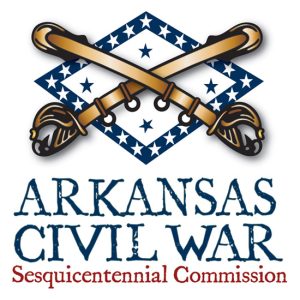calsfoundation@cals.org
Burning of Mound City
| Location: | Crittenden County |
| Campaign: | Vicksburg Campaign |
| Date: | January 13, 1863 |
| Principal Commanders: | Lieutenant Joshua Bishop, Major George Cubberly (US); None (CS) |
| Forces Engaged: | Gunboat USS Linden, Eighty-ninth Indiana Infantry (US); None (CS) |
| Estimated Casualties: | None reported |
| Result: | Union victory |
This punitive expedition relates to Union efforts to secure Memphis, Tennessee, as a supply and hospital base capable of supporting ongoing operations against Vicksburg, Mississippi. It stands as an early example of the shift toward hard war tactics that would increase throughout the remainder of the Civil War.
The decision to burn the village of Mound City (Crittenden County), located on the shore of the Mississippi River between Marion (Crittenden County) and Memphis, had roots in an extended and destructive Confederate partisan raid conducted in Crittenden County by Captain James H. McGehee’s unattached company of Arkansas cavalry in January and February 1863 and were part of a punitive Union campaign to prevent the use of riverside communities as guerrilla bases. During McGehee’s raid, his company destroyed at least seventeen Union naval vessels and flatboats, including the steamers Jacob Musselman and Grampus No. 2 (loaded with 3,500 pounds of coal), as well as the tow-steamer Hercules.
Under orders from Lieutenant Commander Thomas O. Selfridge, senior Union naval officer at Memphis, to reconnoiter the place where Confederate partisans destroyed the two steamers, Lieutenant Joshua Bishop took command of the light-draft gunboat the USS Linden. On January 12, he embarked from Memphis with a detail from the Eighty-ninth Indiana Infantry under Major George Cubberly. Moving upriver, past Mound City, they dropped anchor at Bradley’s Landing. Around 10:00 a.m., they witnessed the steamer Chippewa Valley acknowledge a signal light from shore. When the Linden attempted to signal the Chippewa Valley, the vessel got underway; the Linden pursued, fired at least once, and caught and boarded the Chippewa Valley. Bishop and his crew found nothing suspicious and allowed the Chippewa Valley to continue its journey, while the Linden steamed back toward Bradley’s Landing.
At 7:00 a.m. on January 13, while anchored at Bradley’s Landing, Bishop learned that a large local guerrilla force intended to destroy Union steamers and use the Crittenden County villages of Mound City, Marion, and Hopefield (Crittenden County) as rendezvous points for their operation. Bishop also learned of the role played by J. E. Cheek of Mound City in the recent burning of the two steamers.
At 9:00 a.m., they left Bradley’s Landing and proceeded to Mound City, firing shells randomly into the woods along the shoreline due to a report of guerrillas. They arrived at Mound City at 10:00 a.m. and disembarked Cubberly and the Eighty-ninth Indiana. Cubberly and his men promptly arrested several citizens on a charge of harboring guerrillas and burned several unoccupied houses, including that of J. E. Cheek. They also captured several shotguns, rifles, and revolvers. During the operation, pickets from the Eighty-ninth Indiana exchanged gunshots with a group of unidentified mounted men. Cubberly and the Eighty-ninth Indiana proceeded by land to Hopefield in search of hidden arms. The Linden landed at Hopefield at 2:00 p.m., where the troops were loaded and steamed back to Fort Pickering in Memphis.
Despite the brief exchange of gunfire, neither Cubberly nor Bishop reported any estimated or actual Confederate casualties. Partisan activity continued along the river in the vicinity of Memphis during the Vicksburg campaign, but harsh tactics such as those employed at Mound City offered an effective countermeasure. A more severe punitive expedition occurred at Hopefield on February 19, 1863.
For additional information:
United States Naval War Records Office. Official Records of the Union and Confederate Navies in the War of the Rebellion. Series 1, Vol. 24: Naval Forces on Western Waters (January 1, 1863–May 17, 1863). Washington DC: Government Printing Office, 1911, pp. 134–137.
Gibson, Charles Dana, and E. Kay Gibson. Dictionary of Transports and Combatant Vessels, Steam and Sail, Employed by the Union Army, 1861–1868. Camden, ME: Ensign Press, 1995.
Robert Patrick Bender
Eastern New Mexico University–Roswell
 Civil War Timeline
Civil War Timeline Military
Military ACWSC Logo
ACWSC Logo 



Comments
No comments on this entry yet.